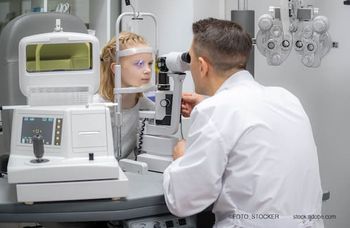
All-femtosecond laser myopic surgery appears promising in early outcomes
Femtosecond lenticule extraction (FLEx) is an all-laser procedure for the treatment of myopia performed using a femtosecond laser system (VisuMax, Carl Zeiss Meditec) to cut a flap and intrastromal lenticule. Results from 6 months of follow-up in 45 eyes suggest that it is a safe and effective refractive surgery modality.
Key Points
New Orleans-Initial experience with femtosecond lenticule extraction (FLEx) indicates this all-laser surgical procedure is safe and effective for the treatment of myopia, said Marcus Blum, MD, at the refractive surgery subspecialty day at the annual meeting of the American Academy of Ophthalmology (AAO).
The procedure is performed using a femtosecond laser system (VisuMax, Carl Zeiss Meditec) to cut both a flap and intrastromal lenticule simultaneously. The flap is lifted, the lenticule is manually removed, and then the flap is replaced.
Dr. Blum presented results from 45 eyes treated for myopia with or without astigmatism that were followed to 6 months in a prospective trial.
"Our results do show a learning curve effect, and we found moderate overcorrection for lower myopic treatments," said Dr. Blum, who is in practice in Erfurt, Germany. "However, the latter issue can be corrected based on the data we have obtained, and we believe our experience suggests [FLEx] is a promising new modality for treating myopia in the future."
The investigational refractive procedure was first reported by Dr. Blum and his co-investigator, Walter Sekundo, MD, at the 2006 AAO annual meeting. Four steps are involved: the femtosecond laser is used to create the back side of the lenticule; the front side of the lenticule is created; the side cut is processed; and the flap is lifted, the lenticule removed, and the flap repositioned.
Due to ethics-related restrictions placed on the protocol, the first cut was made at a corneal depth of 200 μm to preserve more than 300 μm of residual stroma in all eyes. The diameter of the back side of the lenticule ranged between 6.5 and 7.2 mm.
The second cut was made at a corneal depth of 120 to 160 μm and with a diameter of 7 to 7.8 mm so that it would overlap the lower cut. The side cut was created with a hinge at the 12 o'clock position.
The 45 eyes in the series were about equally divided between right and left eyes, and men and women were about equally represented among the patients. Mean preoperative manifest refractive spherical equivalent (MRSE) was –4.5 D (range, –2.75 to –7.25 D).
Dr. Blum reported about two-thirds of eyes achieved uncorrected visual acuity of 20/20 or better at 6 months, and there were only a few with vision worse than 20/30. The BSCVA results showed several eyes lost 1 line of BSCVA, but a large proportion gained vision, and no eyes lost more than 1 line. At 3 months, there was a loss of 1 line of BSCVA in 13% of eyes, and 42% of eyes gained 1 line. At 6 months, 7% of eyes had a 1-line loss, and 40% of eyes gained 1 line.
MRSE demonstrated good stability from 1 month onward. At 3 months, 76% of eyes were ±0.5 D of intended MRSE, and 96% were ±1 D. The predictability was slightly lower at 6 months when 90% of eyes had an achieved refraction within 1 D of intended.
"After separating out the data for the first 20 eyes, we see that our results have gotten better with increasing experience," Dr. Blum said. "However, we also expect better outcomes once we address the overcorrections that were occurring in eyes with lower amounts of myopia."
Corneal topography maps demonstrated large, prolate optical zones, and wavefront measurements showed that the procedure was not associated with significant induction of higher-order aberration.
"Compared with standard excimer laser refractive surgery [FLEx] may induce less variation in ocular aberrations," Dr. Blum said.
Adverse events/complications were limited to a single eye with mild haze at 6 months and a few eyes with microstriae.
"There were no eyes that developed diffuse lamellar keratitis or transient light sensitivity syndrome, and we were very happy that we had no safety concerns that had to be reported to the Ethics Committee," Dr. Blum said.
Newsletter
Don’t miss out—get Ophthalmology Times updates on the latest clinical advancements and expert interviews, straight to your inbox.


















































.png)


